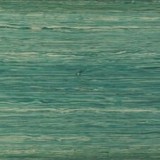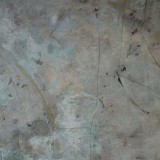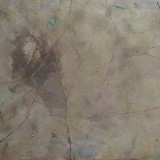Wojciech Leder
Wojciech Leder (born 1960) graduated from the Department of Painting and Graphics within the Art College (today the Academy of Fine Arts) in Łódź. He received his diploma in 1985 from both the Studio of Wood Engraving Techniques run by Prof. Andrzej M. Bartczak and the Studio of Painting run by Prof. Stanisław Fijałkowski. Since 1991 he has worked in the Art College (today the Academy of Fine Arts) in Łódź and he co-created the Open Studio in this school. He works as a fine art painter. In 1997 he was awarded the Grand Prix from the Bielska Jesień (Bielsko Autumn) National Competition.
He treats a painting as an autonomous, material object, a surface filled with visual forms. He creates paintings which in a traditional sense are not realistic, they do not document a landscape or direct the viewer towards what is outside of the painting. For this reason they may be called abstract. On the other hand, he very specifically achieves within these paintings, effects observed in the surrounding world: he imitates cracks on the ground, concentric circles on the surface of water, the intermingling colours of rocks or the cracks in a dried puddle.
To achieve these effects he uses various techniques and special technologies: he polishes paintings, cuts them and fills the cuts with paint or makes intarsia. He includes natural materials such as sand or earth and also uses substances which he can adjust to his own vision through polishing or colouring. He uses natural processes, which he however provokes in a conscious way. The techniques used by the artist are increasingly more and more complicated. He uses various aggregates and paint mediums, he uses ash, various kinds of plasters, and also both a grinding and scraping machine and a machine used to polish concrete. Along with technical experiments the artist willingly reaches for the technique of encaustics. Soft, pleasant smelling and warm wax is layered on the surface of the painting and after setting, there is the possibility of putting another layer on top without disturbing the previous one. It allows the artist to make an intarsia involving many layers, which after polishing give surprising colour effects and also an ideal smoothness. In this way, the artist enters an accidental element into his work which is otherwise carefully thought over and precisely prepared.
Marcin Latałło completed a movie in which he documented how the work Ordinare Agrum was made. It can be seen that the creation of a painting is a strenuous process of struggle with the matter. Not only does it require an intellectual effort during the concept of the work, but also requires the gathering of appropriate materials to make it and patience to achieve the desired, intended effect. Then finally concentration and precision is required in order to come to the moment, when the painting is considered finished. In the case of Leder’s painting, we are not only dealing with the precise realisation of previously taken up idea, using custom techniques. Each painting contains a strong energetic charge and emits that energy.
Leder’s paintings, although they are abstract, have this kind of monumentalism in them which allows for the expression of universal messages. One can see the influence of his education in philosophy (in 1982-1985 he studied philosophy at the University of Łódź), which is revealed in his pursuit to reflect the absolute, as in the series The Door to the Philosopher’s Wardrobe or The Theory of Transparent Goals and similarly in the diptych A Lizard, Death, Resurrection – one of a few works in which a word is included word. When he titles his works, he concentrates on formal means, but through an appropriate selection of material, he gives his works a metaphoric character. In The Seducing of St. Antony, he used mica and the pigment used to make lipsticks which he dissolved in car lacquer, at the same time bringing attention to the “seductions” of the contemporary world.
Amongst his most recent works there is a series entitled Composition without contours, in which the artist matches colours and shapes in a way that the composition based on geometric shapes, gives an impression of being out of focus. By blurring the line which separates forms which appear next to each other, the artist creates similar effects to those which we get when we take a photo out of focus. This kind of image loses its materiality, and in blurred shapes, soft and subtle we search for prototypes in the surrounding world.
In 2008 he made an exhibition under the meaningful title Farewell to abstraction, which closed a certain stage of his artistic research. In 2012 he was a curator of The Deconstruction of Utopia which he prepared from the perspective of a painter. His subjective selection of artists which were interested in the search for proper forms to express contemporary times embraced both constructivist artworks and those which were made recently and only referred to the constructivist ideas.
Karolina Jabłońska





